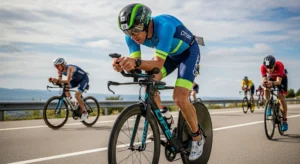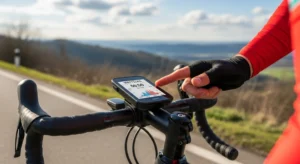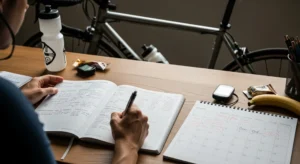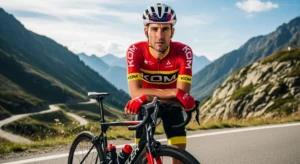Purchasing your first bicycle is an exciting step toward better health, sustainable transportation, or even exploring new hobbies like biking tours or mountain biking. However, with so many options available, choosing the right bike for your needs can be overwhelming. This guide will walk you through everything you need to know to make an informed decision and get the perfect bike for your lifestyle.
1. Determine Your Primary Use
Before diving into the world of bicycles, it’s essential to consider what you’ll primarily use your bike for. This will help narrow down the type of bike you need.
-
Commuting: If you plan to ride your bike to work or run errands, a road bike, hybrid bike, or even an electric bike might be a great choice.
-
Fitness: If you’re focused on staying active, a road bike or hybrid bike can provide a good mix of speed and comfort.
-
Recreation: For casual rides around town or through local parks, a cruiser bike or hybrid bike could offer a smooth and relaxed experience.
-
Mountain Biking: If you’re an adventure seeker and plan on hitting trails, a mountain bike with sturdy tires and suspension is the way to go.
-
Long-Distance Riding: If you’re looking for long-distance touring, consider a touring bike or a road bike designed for endurance.
2. Understand the Different Types of Bikes
Here’s a quick breakdown of the most common types of bikes, and their pros and cons:
-
Road Bikes: Designed for speed and efficiency on smooth pavement, road bikes are lightweight with thin tires and drop handlebars. They are perfect for commuters and fitness enthusiasts.
-
Mountain Bikes: Built for rugged terrain, mountain bikes have knobby tires and suspension systems that absorb shocks from rocky or uneven paths. They’re ideal for off-road trails and rough landscapes.
-
Hybrid Bikes: A blend between road bikes and mountain bikes, hybrid bikes offer comfort and versatility. With wider tires than road bikes, they are suitable for both paved roads and light trails.
-
Cruiser Bikes: Known for their comfortable seats and upright riding position, cruiser bikes are perfect for leisurely rides around town. They are often equipped with features like fenders and baskets, making them ideal for short, casual rides.
-
Electric Bikes: Featuring a small motor to assist with pedaling, electric bikes (e-bikes) are a great choice for reducing the physical strain of cycling. They’re great for commuters and people with physical limitations.
3. Fit Is Key
The most important factor in ensuring comfort and performance is getting the right fit. A well-fitted bike will make your ride more enjoyable and prevent discomfort or injury.
-
Frame Size: Frame size is usually measured by the length of the seat tube. Each type of bike has a specific range of frame sizes, and it’s essential to match the right size to your height and inseam length.
-
Handlebar Height: If you prefer an upright riding position, look for a bike with adjustable handlebars. If you’re more performance-focused, drop handlebars might offer a more aerodynamic posture.
-
Seat Comfort: A comfortable seat is essential for longer rides. Look for padded or ergonomic seats that suit your riding style. Test out the bike in-store to ensure the seat feels right.
4. Test Ride the Bike
Before making a purchase, always test ride the bike. This allows you to check the fit and ensure that the bike feels comfortable. Pay attention to how the bike handles, how easy it is to pedal, and how the gears shift. If something feels off, don’t hesitate to try a different model or ask for adjustments.
5. Consider the Components
Bicycles come with various components that affect performance. Here are a few key elements to keep in mind:
-
Gears and Shifting: If you plan on riding on hilly terrain, having a bike with multiple gears will make your ride more comfortable. Road bikes often have more gears, while cruisers and hybrid bikes typically have fewer.
-
Brakes: There are two main types of brakes:
-
Rim Brakes: These are the most common type, using friction on the wheel’s rim to slow down.
-
Disc Brakes: More powerful and reliable, especially in wet conditions, disc brakes are found on higher-end mountain bikes and some road bikes.
-
-
Tires: Tire width and tread are important for different terrains. For road bikes, narrower tires provide speed, while mountain bikes have wider tires with more traction for rough terrain.
6. Budgeting and Extras
Your budget will influence the type of bike you can get, but it’s important not to compromise on quality for the sake of price. A good entry-level bike should cost between $300 and $800, depending on the type and brand.
Besides the bike itself, you’ll need some essential accessories:
-
Helmet: Always wear a helmet for safety. Look for one that fits snugly and meets safety standards.
-
Lights: If you plan to ride at night, invest in front and rear lights to stay visible.
-
Lock: Protect your bike with a sturdy lock, especially if you’ll be parking it in public areas.
-
Water Bottle Cage: If you plan on riding for extended periods, having a water bottle holder can keep you hydrated.
-
Bike Pump and Repair Kit: For emergencies, having a pump and basic repair tools is essential.
7. Where to Buy Your Bike
You have a few options for buying your first bike:
-
Local Bike Shops: These are great for personalized service and fitting. You’ll also get the opportunity to test ride different models.
-
Online Retailers: If you know exactly what you want, buying online can often save you money. Just make sure you know your size and don’t mind assembling the bike yourself.
-
Department Stores: These bikes tend to be cheaper, but they might lack quality or proper fit. It’s usually better to avoid them if you’re serious about biking.
8. Maintenance and Care
Once you’ve bought your bike, proper maintenance will help extend its life. Regularly clean the bike, lubricate the chain, check the tire pressure, and inspect the brakes. It’s also a good idea to take your bike for a professional tune-up at least once a year.
Final Thoughts
Buying your first bike is an exciting investment in your health and well-being. By considering your needs, fitting the bike to your body, and choosing quality components, you can make a smart purchase that will keep you riding smoothly for years to come.
Remember to take your time, test out different models, and ask for help from experts at your local bike shop. With the right bike, you’ll be ready to hit the road or trail in no time!
Happy cycling!




